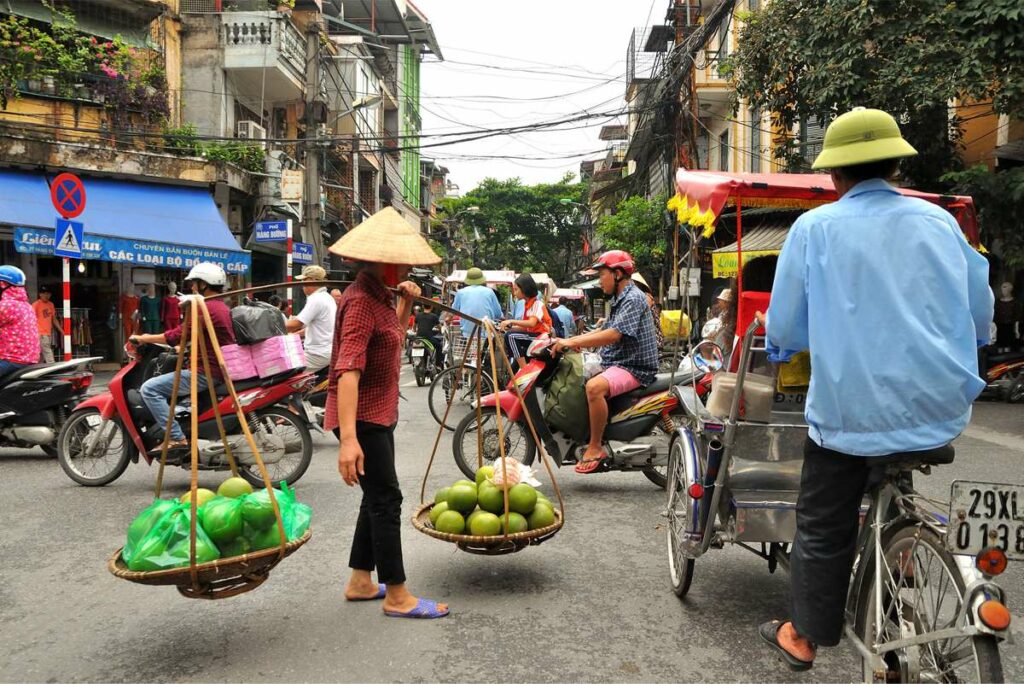What is the Turtle Tower?
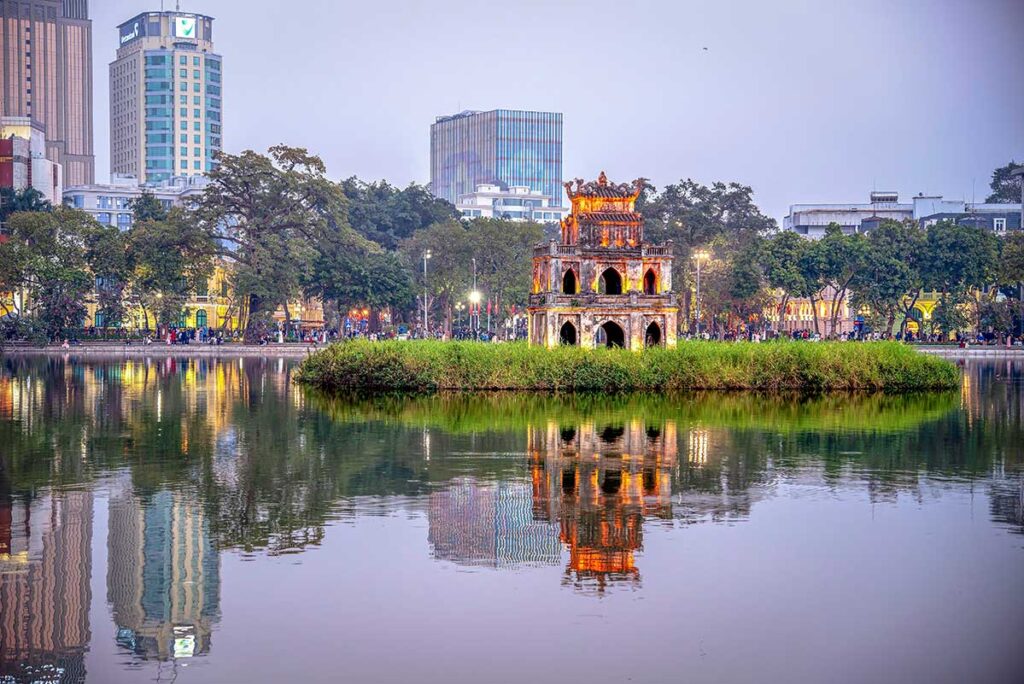
Turtle Tower, also known as Tháp Rùa, is a small three-story stone structure built in 1886 on a tiny island in the center of Hoan Kiem Lake in Hanoi. It was originally constructed during the French colonial period but has since come to symbolize Vietnamese national identity through its connection to the legendary hero Le Loi and the tale of the returned sword. While the tower itself is not accessible to visitors, it can be admired from all sides of the lake and serves as a scenic focal point during a walk around one of Hanoi’s most beloved public spaces.
History and Legend of the Turtle Tower
Historical Background
Turtle Tower was constructed in 1886 during the French colonial period by Nguyễn Hữu Kim, a local official serving as an intermediary between the Vietnamese imperial court and the French administration. His true intention was to secretly bury his father’s remains inside the tower, but the plan was discovered and the body removed before the structure was completed.
The tower was initially named Bá Hộ Kim Tower after his family, though this name was soon forgotten as the site became more closely linked with national symbolism. In 1890, the French authorities placed a small replica of the Statue of Liberty on top of the tower as a symbol of colonial influence, but it was removed in 1945 after the Japanese overthrew the French, marking a shift toward Vietnamese independence.
Connection to Lê Loi and the Returned Sword
Beyond its colonial-era origins, Turtle Tower is deeply tied to the legend of Emperor Lê Lợi, a 15th-century hero who led the resistance against Chinese Ming invaders. According to the myth, Lê Lợi was granted a magical sword—Thuận Thiên (“Heaven’s Will”)—by the Golden Turtle God (Kim Quy) to help him defeat the enemy. After reclaiming Vietnamese independence, Lê Lợi returned the sword to the divine turtle in Hoan Kiem Lake, where it disappeared beneath the water. This act gave the lake its name, Hoàn Kiếm, meaning “Lake of the Returned Sword.”
The story, though mythical, remains a powerful symbol of national pride and the idea of heaven-sanctioned leadership. While the tower was not originally built to commemorate this tale, its presence on the lake naturally drew connections to the legend, helping transform it into a lasting icon of Vietnamese heritage.
Architecture of Turtle Tower
Turtle Tower is a modest three-story stone structure, with each floor slightly smaller than the one beneath it, creating a tapered, vertical silhouette that adds to its visual appeal. Its design blends French colonial influences—such as arched doorways and railings—with traditional Vietnamese elements like the curved roof edges found on the top tier.
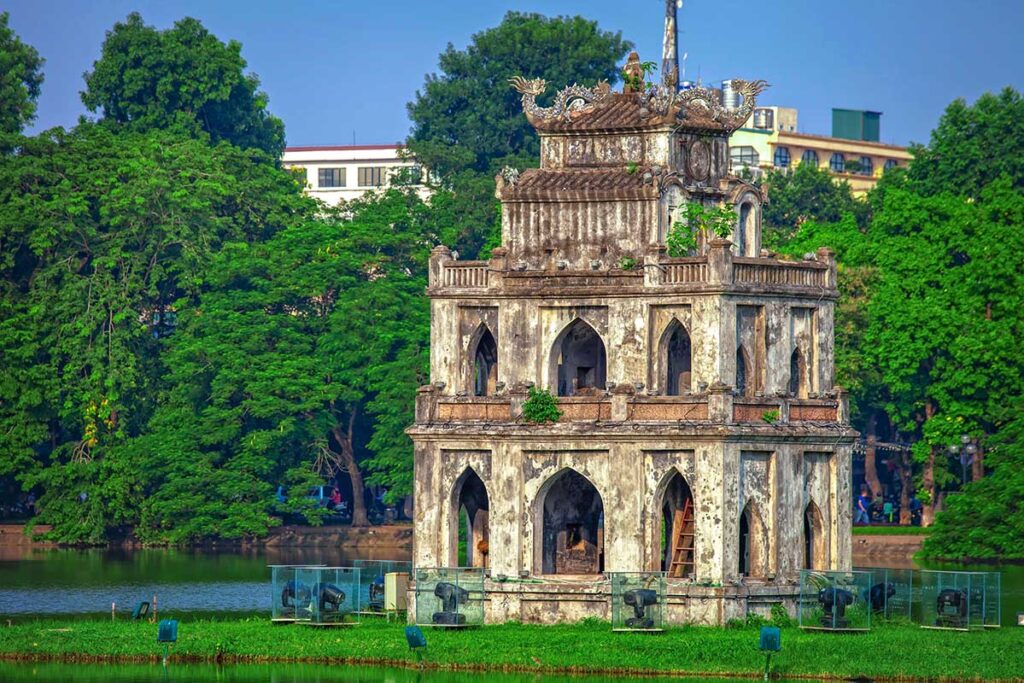
Each side of the tower features multiple arched openings, and on the third floor, the inscription Quy Sơn Tháp (“Tower of the Turtle Mountain”) is carved into the façade.
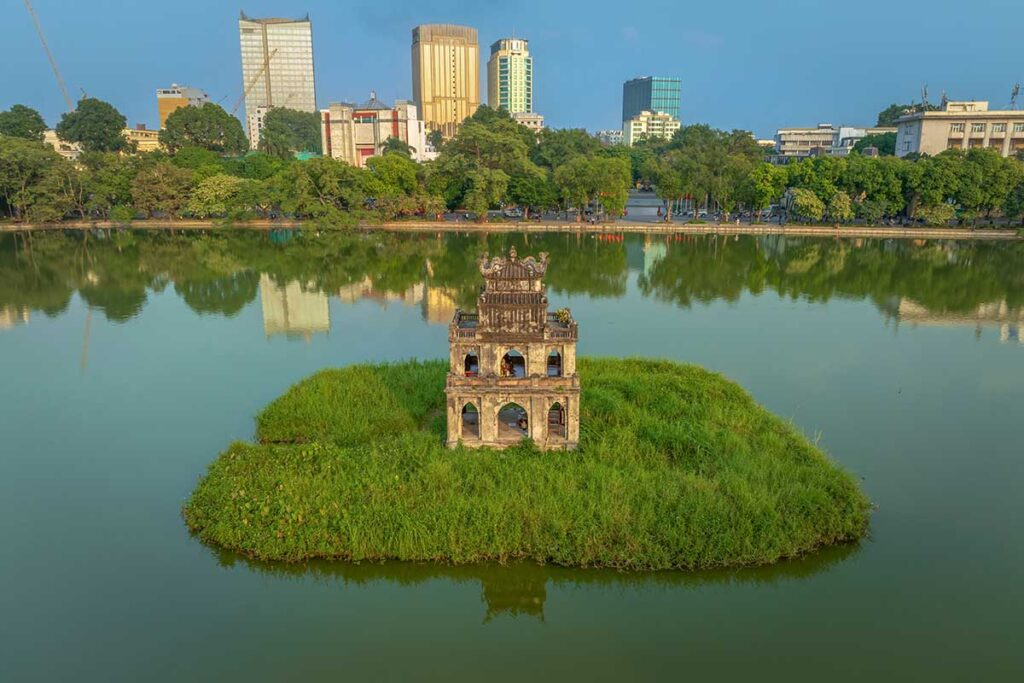
The tower stands on a small island roughly 350 square meters in size, while the base of the structure itself measures about 6.3 meters long and 4.5 meters wide. Though simple in form, its unique mix of styles and solitary position in the lake give it a striking presence, especially when viewed from the shores of Hoan Kiem Lake.
Visiting the Turtle Tower today
Can you visit it?
Turtle Tower may be one of Hanoi’s most recognizable landmarks, but you can’t actually set foot on it. The small island it sits on is closed to the public, with no bridge or accessible path leading to it. There are also no boat rides allowed on Hoan Kiem Lake, despite common tourist hopes for a closer view. The tower is meant to be admired from afar—quiet, symbolic, and untouched.
Best viewing spots
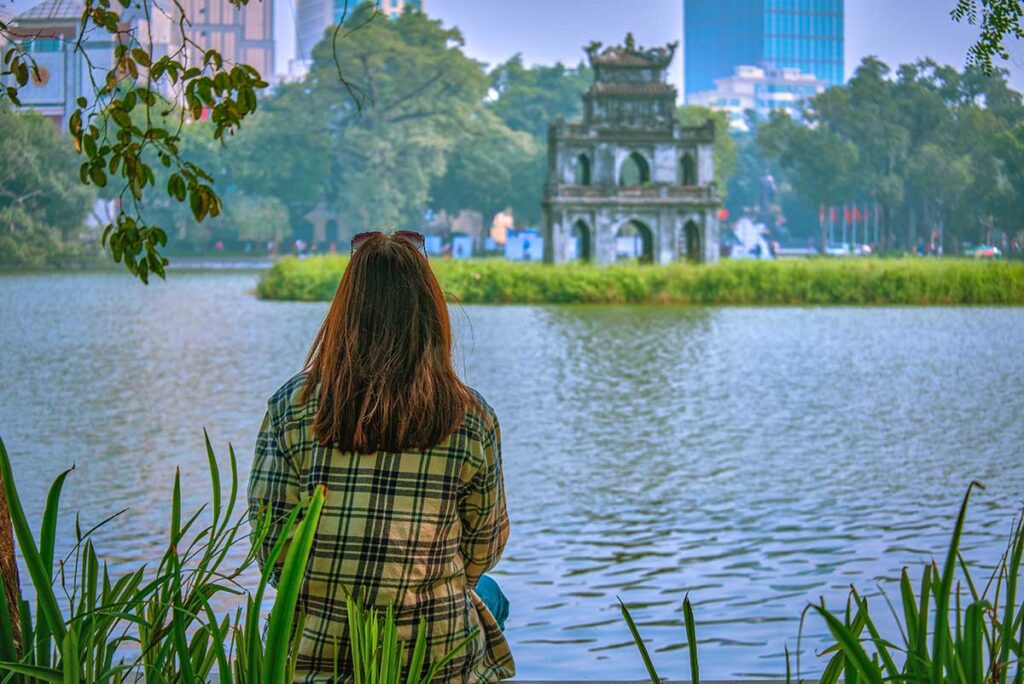
The closest views of Turtle Tower are from the southern parts of Hoan Kiem Lake, especially along Dinh Tien Hoang Street. If you’re hoping to photograph it, bring a zoom lens—details like the tower’s arched openings or roof curves can be hard to capture from shore without one. That said, the tower is beautifully visible from nearly every angle around the lake, and each side offers a slightly different backdrop.
Combine with a scenic walk
A visit to Turtle Tower is best experienced as part of a larger walk around Hoan Kiem Lake, especially in the late afternoon or evening.
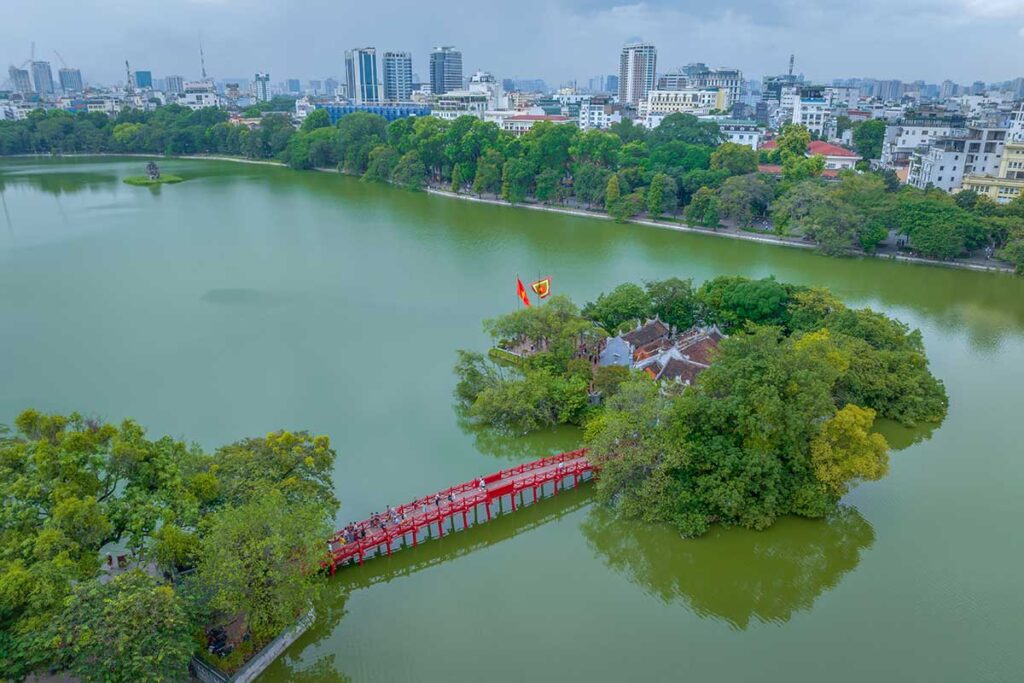
Start from the north end near the Old Quarter and cross The Huc Bridge to Ngoc Son Temple, a vibrant red pedestrian bridge that leads to one of Hanoi’s most visited shrines.
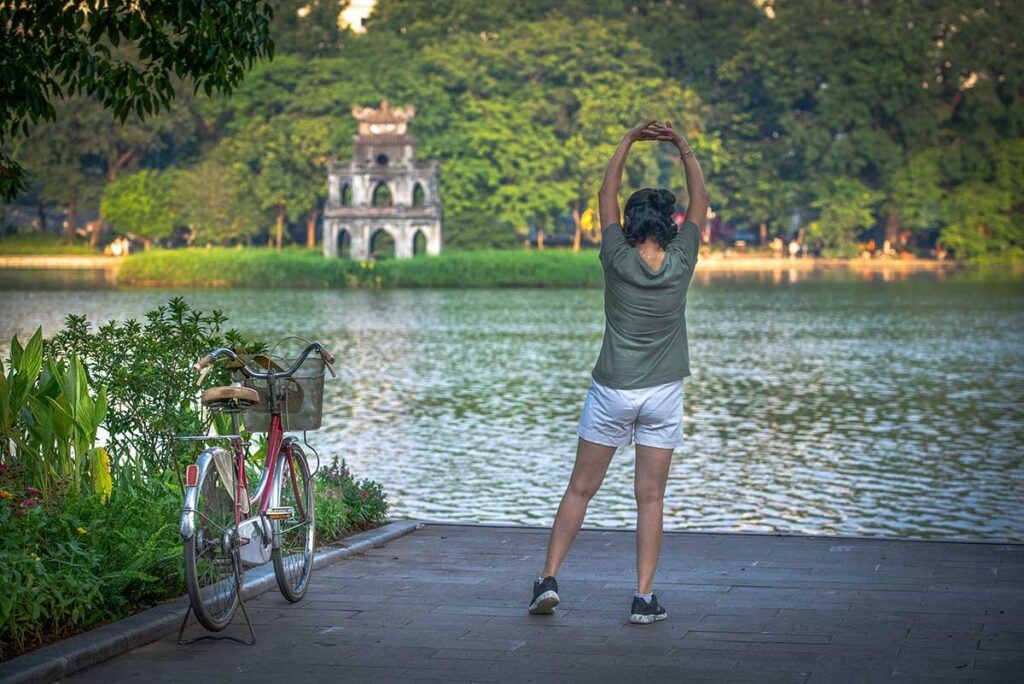
From there, walk south along the eastern lakeside path toward Turtle Tower, passing street vendors, musicians, and lakeside benches.
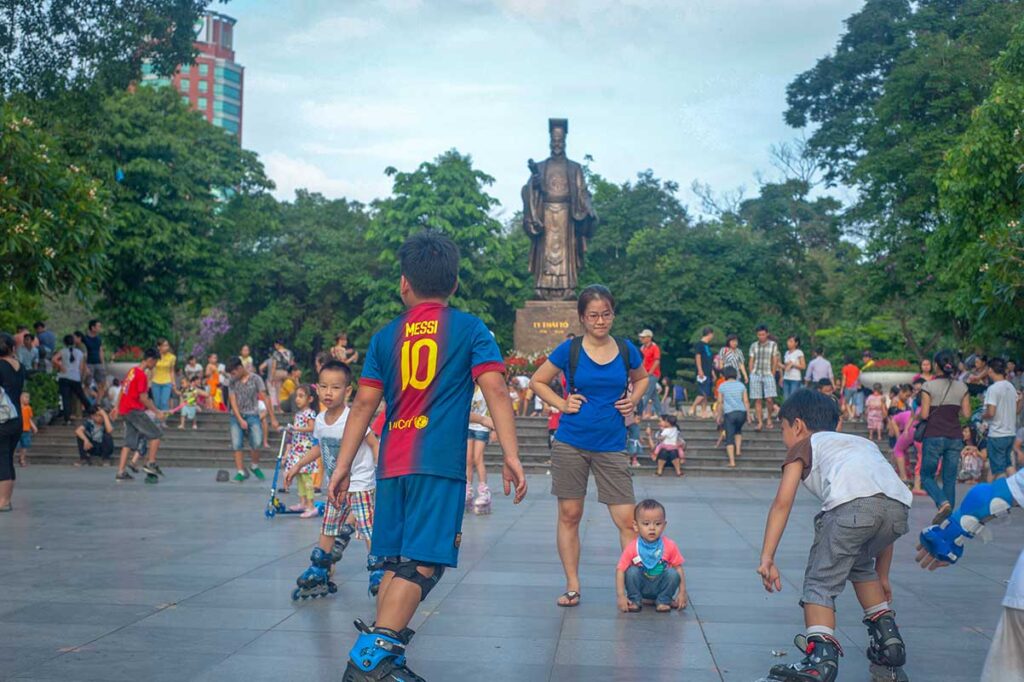
At the same level as the tower, cross into Ly Thai To Park, where you’ll find a statue of the emperor and the historic Toad Fountain, believed to be Hanoi’s oldest.
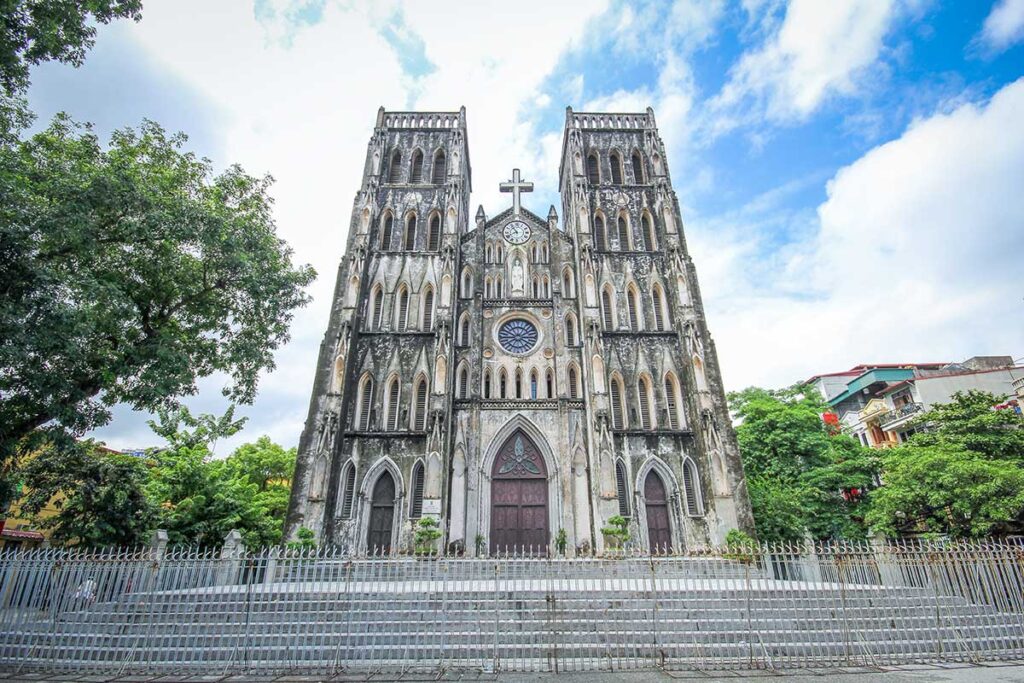
If you’d like to explore a bit further, make a small detour to the St. Joseph Cathedral on the lake’s west side before continuing your loop northward. This entire route gives you a scenic mix of architecture, history, and relaxed city life, all anchored by views of the Turtle Tower.
Local life around the lake
The area around Turtle Tower isn’t just a tourist spot—it’s a favorite gathering place for Hanoians. In the early mornings, you’ll see people doing tai chi, jogging, or stretching. Later in the day, locals come to sit on benches, chat, take photos, or stroll with friends.
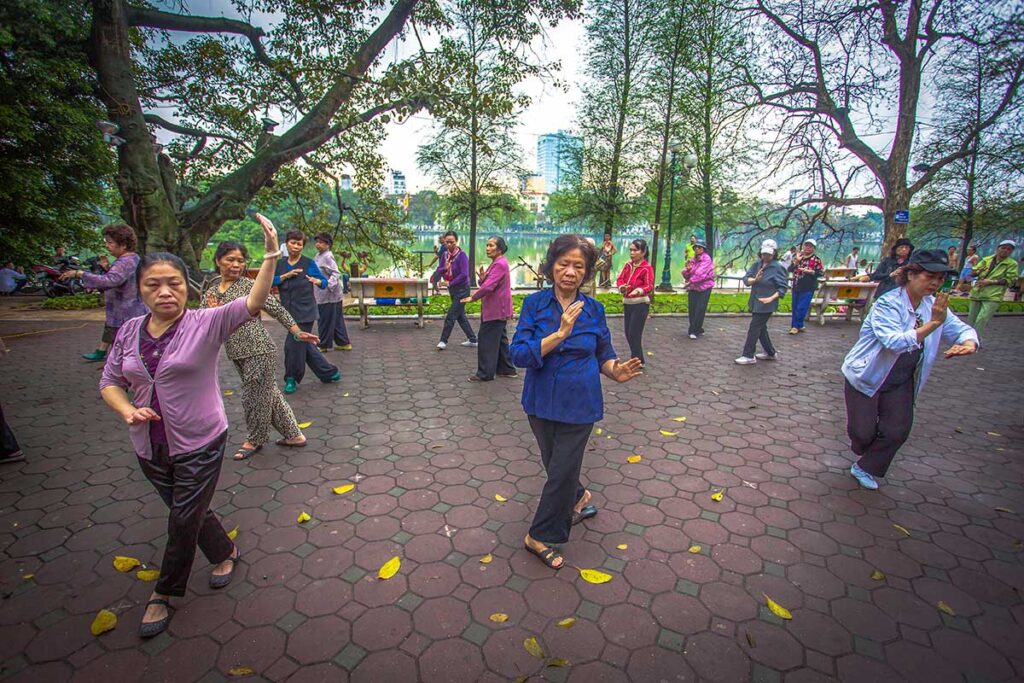
On weekends, students sometimes approach foreigners to practice their English, adding a spontaneous and friendly feel to the walk. Whether you’re looking to people-watch, enjoy the breeze off the lake, or simply take a break from the city’s bustle, the atmosphere around Turtle Tower offers a peaceful and engaging slice of daily life in Hanoi.
Best time to visit Turtle Tower
It might seem odd to talk about the “best time to visit” a place you can’t actually enter, but timing makes a big difference in how you experience Turtle Tower. The atmosphere around Hoan Kiem Lake changes throughout the day, and the tower looks especially striking in certain light.
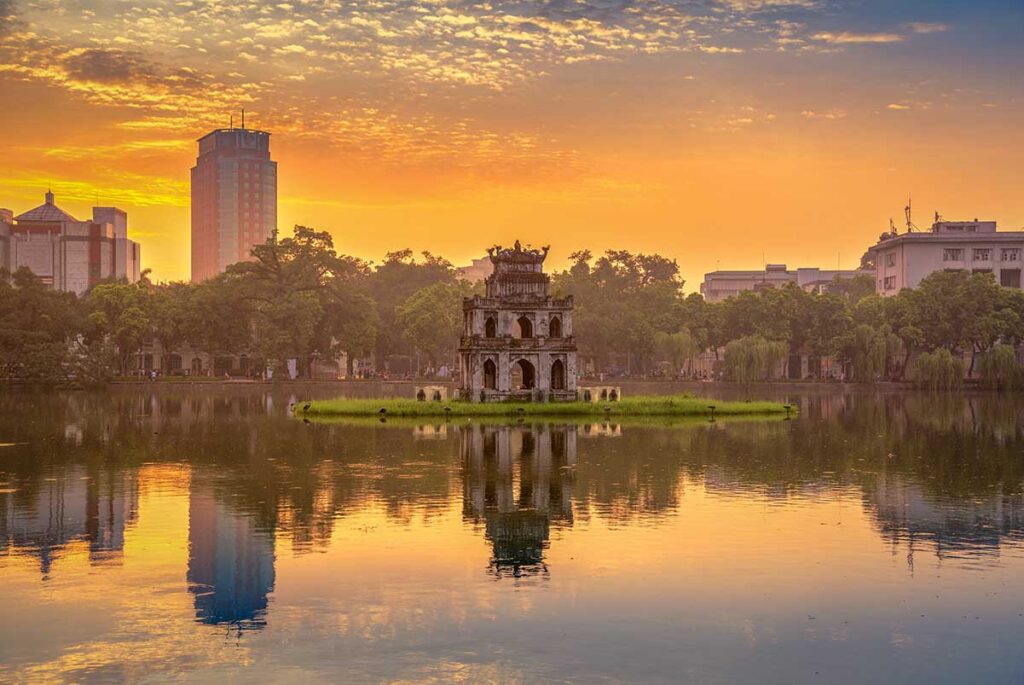
Late afternoon is the most atmospheric time to be there. The sun begins to dip behind the buildings on the western side, casting a warm golden hue across the water.
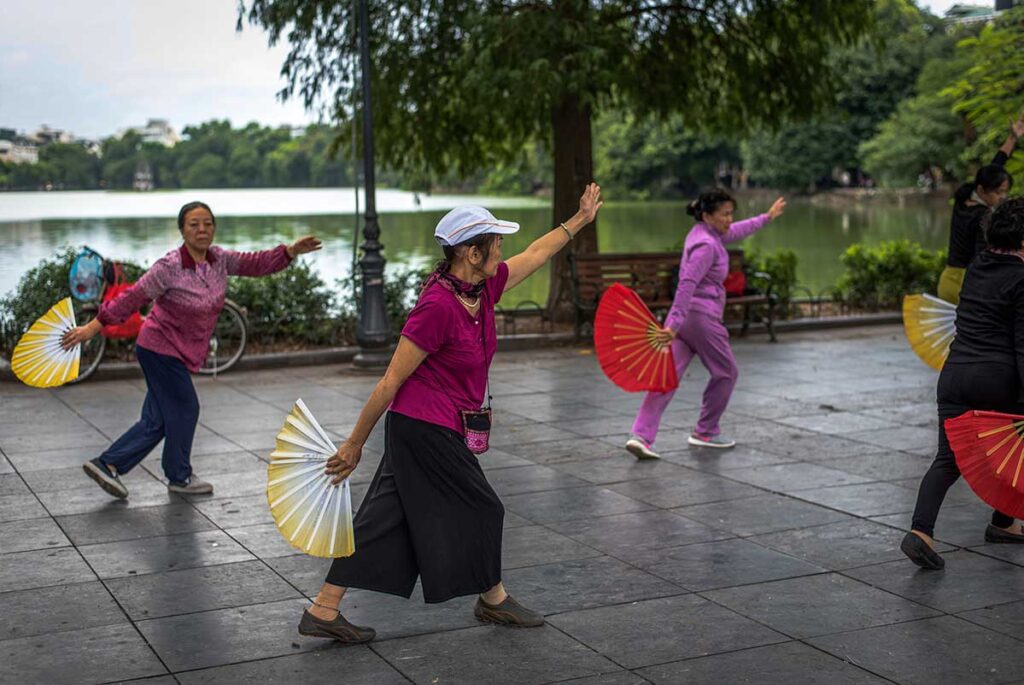
Locals come out in large numbers—jogging, chatting, roller-skating, or just enjoying the breeze—bringing the lake area to life. You’ll also catch the last rays of daylight illuminating the tower, ideal for photography.
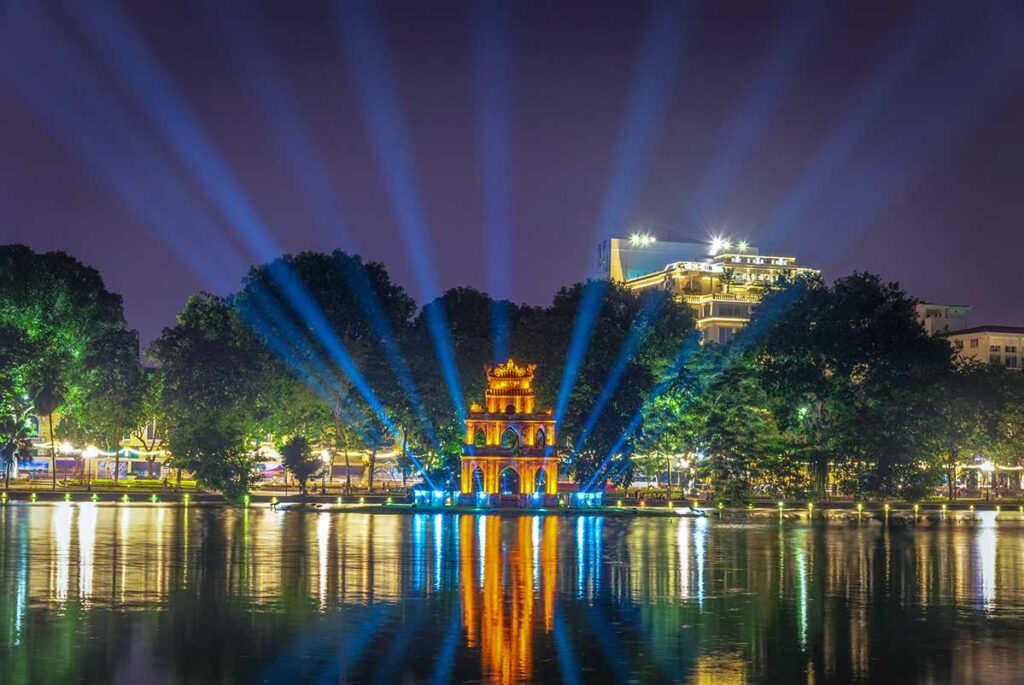
In the evening, Turtle Tower becomes quietly enchanting. It’s lit up with soft golden lights that reflect off the lake surface, making for a peaceful and photogenic scene. This is one of the most romantic times to stroll the lakeside.
Early morning offers a very different experience. The area is calm and cool, with fewer people except for early risers doing tai chi or exercising. It’s the best time for a quiet walk or to take photos in soft, diffused light—especially if you want the tower without crowds in the frame.


